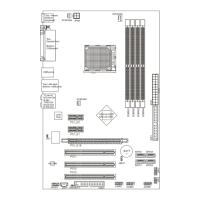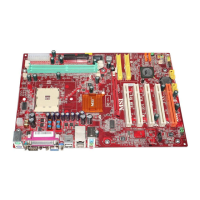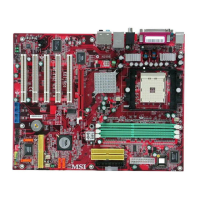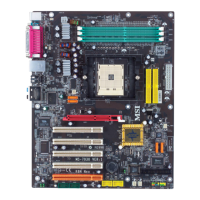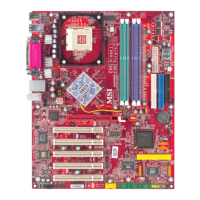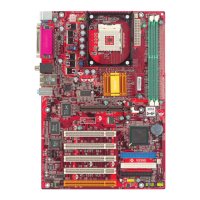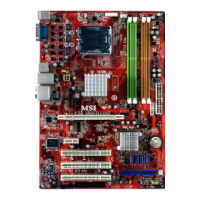
Do you have a question about the MSI K9N Neo V3 Series and is the answer not in the manual?
| Form Factor | ATX |
|---|---|
| Socket Type | AM2 |
| Max Memory | 8GB |
| Audio | Realtek ALC888 |
| LAN Chipset | Realtek RTL8201CL |
| Max. LAN Speed | 10/100Mbps |
| CPU Type | AMD Athlon 64/Athlon 64 FX/Athlon 64 X2/Sempron |
| Memory Slots | 4 |
| Memory Standard | DDR2 800 |
| Expansion Slots | 1 x PCIe x16, 2 x PCIe x1, 3 x PCI |
| SATA Ports | 4 |
| IDE | 1 x ATA133 |
| Audio Ports | 6 Ports |
Details the technical specifications of the MS-7369 mainboard, including processor, chipset, memory, LAN, and audio.
Illustrates the physical layout of the MS-7369 ATX mainboard, labeling key components and connectors.
Lists the items included in the mainboard package, such as cables, CD, and I/O shield.
Provides instructions for installing the CPU, including important notes on preventing overheating and handling.
Explains how to install DDR2 memory modules and details the dual-channel mode population rules.
Details the ATX 24-Pin and 12V power connectors, including pin definitions and recommendations.
Describes various connectors on the mainboard, including Floppy Disk Drive, IDE, and SATA connectors.
Details the PCI Express and PCI slots, their specifications, and interrupt request routing.
Explains how to enter the BIOS setup utility by pressing the DEL key during POST.
Covers basic system configurations like date, time, and IDE/SATA device settings.
Details advanced BIOS settings related to boot sector protection, logo display, and boot sequence.
Explains how to configure onboard peripherals like USB, LAN, and IDE/SATA controllers.
Covers ACPI functions, standby states, and wake-up event settings for power saving.
Allows adjustment of CPU and DRAM frequencies, voltages, and other performance-related settings.
Step-by-step guide for installing the Realtek HD Audio driver for Windows operating systems.
Explains how to use the HD Audio Configuration utility for multi-channel audio features.
Details how to adjust audio volumes for playback and recording, including multi-stream functionality.
Guides the user in configuring speaker outputs for different channel modes and speaker setups.
Describes how to test individual speakers for functionality and proper connection.
Outlines the basic steps for configuring NVRAID arrays, including non-bootable and bootable setups.
Instructions for installing the NVIDIA RAID driver during Windows XP setup for bootable arrays.
Details on initializing and converting disk arrays under Windows using Computer Management.
Explains the process of restoring data to a hard drive from other drives in a fault-tolerant array.
Describes how to force a rebuild of redundancy or parity for fault-tolerant RAID arrays.
Guide for installing the NVIDIA System Driver and NVIDIA IDE SW Driver for Windows.
Overview of the Dual Core Center utility, its requirements, and basic functions.
Explains the Dynamic Overclocking Technology for automatic CPU/GPU performance boosting.
Details how to monitor and adjust CPU, FSB, GPU, and memory clocks for performance tuning.
Guides users on monitoring and adjusting system voltages for overclocking purposes.
Describes how to read and adjust fan speeds for optimal system cooling.
Allows users to define, save, and load custom profiles for clock, fan speed, and voltage settings.
